Lesson 1 – Nuances of mixing pigments.
Hi everyone, this is Anna Dixon, thank you for enrolling in this course and we are ready to start.
We will start by learning some nuances of mixing pigments.
Mixes for eyebrows, lips, and eyelids: so, as we all know we have three primary colors.
- Blue
- Red
- Yellow
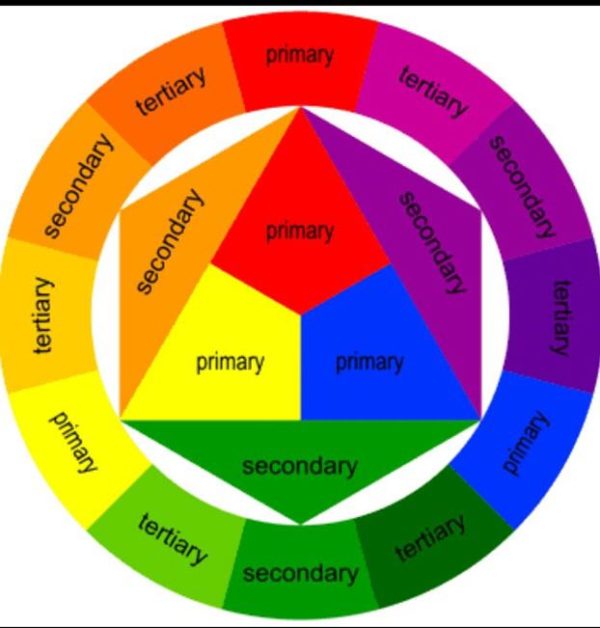
These colors you can't get by mixing all other colors and shades.
Mixing these three colors in certain proportions we get the neutral brown color to the eyebrows.
In order to saturate and get a darker color-we to take bluer (meaning any brown color on a cold base).
If we want to get a light shade - we add more yellow, medium red and slightly blue colors.
So you can get a million different combinations. And if to take into consideration that client skin contains all these colors in different proportions, you can get more various combinations.
- And here is a video, how I mixing primary colors in PMU by tattoo inks.
In permanent make up colors the same rules just :
Blue = darkest cold brown or black
Yellow = blond
Red = orange corrector
Remember that dark cold pigment makes your mix colder and orange makes your mix warmer, yellow makes mix lighter (not warmer and not colder just lighter).
- And I want to start with Li Pigments

Ebony Brown is a cold dark color, you can use it for eyeliner or pure for NOT transparent techniques to getting a very intensive ombré effect. With transparent techniques will heal grey or light purple color, so mix it with Sahara or Caribbean mod
A chocolate truffle is cold medium ash color, very universal and good for all types of skin and all techniques (soft powder or ombre) except hair strokes. After healing looks very natural ashy
Sahara is a cold light color, use like the base for blond color just add a little chocolate truffle to make the color darker
Caribbean mod is corrector to get warm color, I remind you that I don't recommend to use warm color in minerals pigments because they based on the iron oxides and turn to red at time, but some times we need to add a little bit warm in cold color for cold type of skin or after healing ebony brown or chocolate truffle can be too cold
Now I'll give you some example of mixes with this pigments
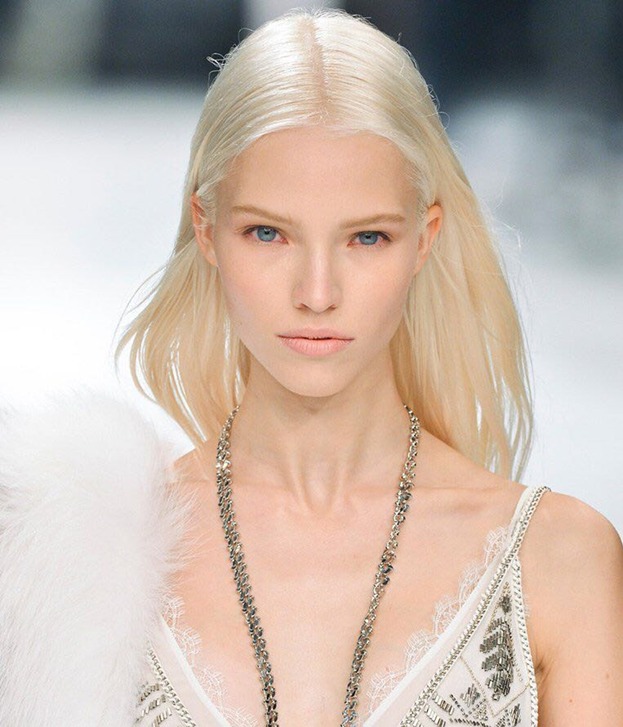
Cold platinum blond, low contrast
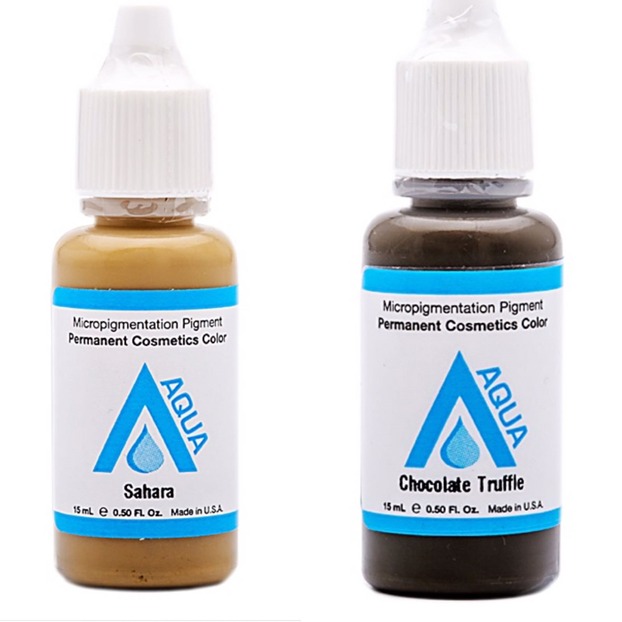
- 2:1 (2 drops and 1 drop) Sahara: chocolate truffle
We will get a medium Ash color in the cup but with transparent technique (soft powder) after healing, brows will be cold blond. Like this

Ok, the next example
_________
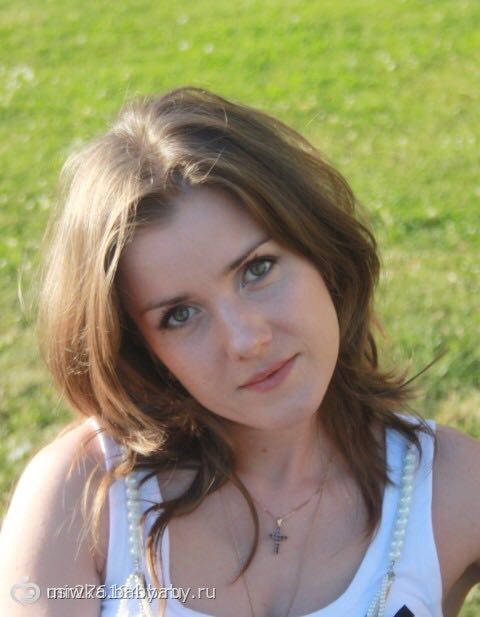
Cold medium ash type, contrast is medium I recommend using the same mix with different proportions
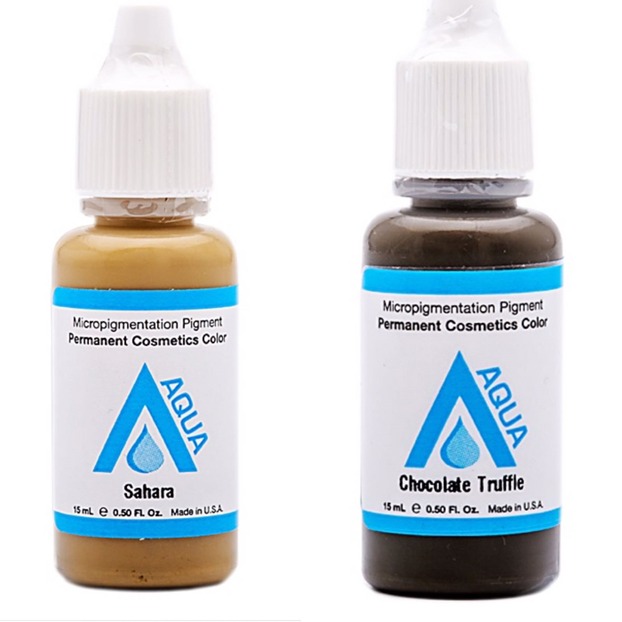
- 4:1 chocolate truffle: Sahara, with the transparent technique you will get very natural medium ash color after healing

Next example
_________
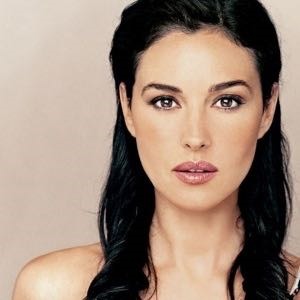
Warm type, contrast is high
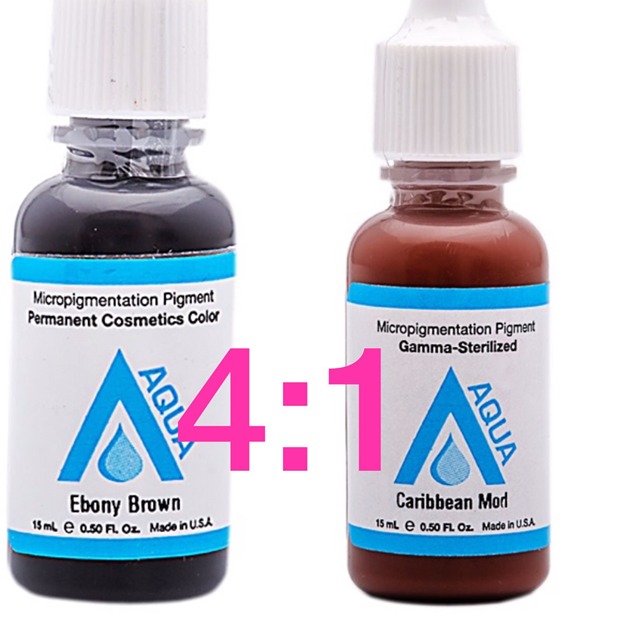
With intensive ombré technique, I recommend adding one drop of warm color to get nice rich color after healing not too cold and flat
_________
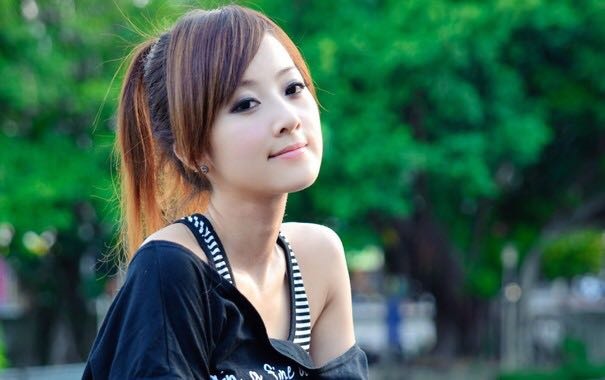
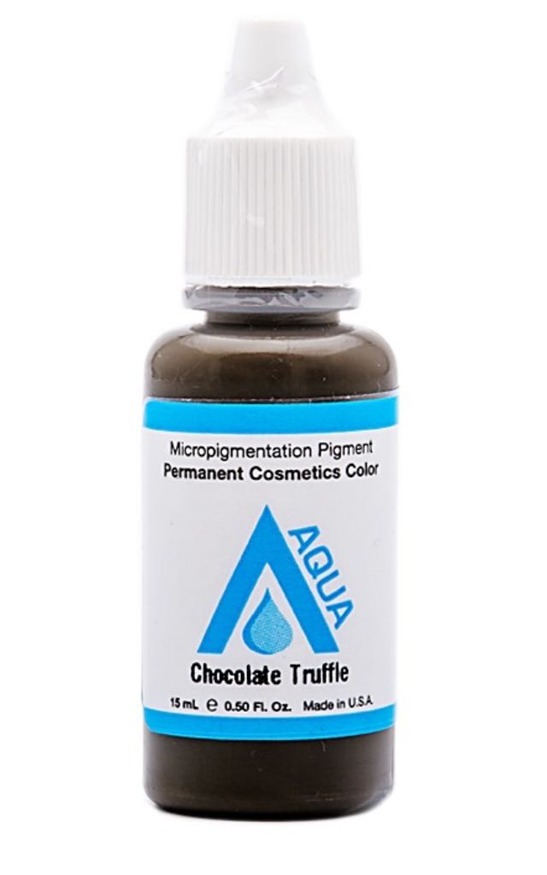
Pure chocolate truffle with very transparent technique

Or mix with Sahara a little bit for ombré technique
_________
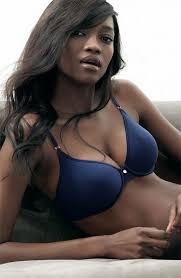
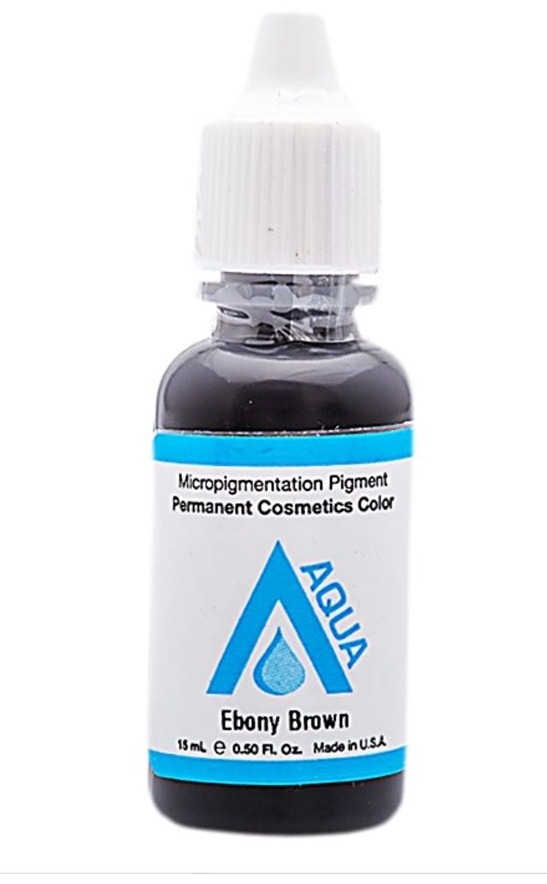
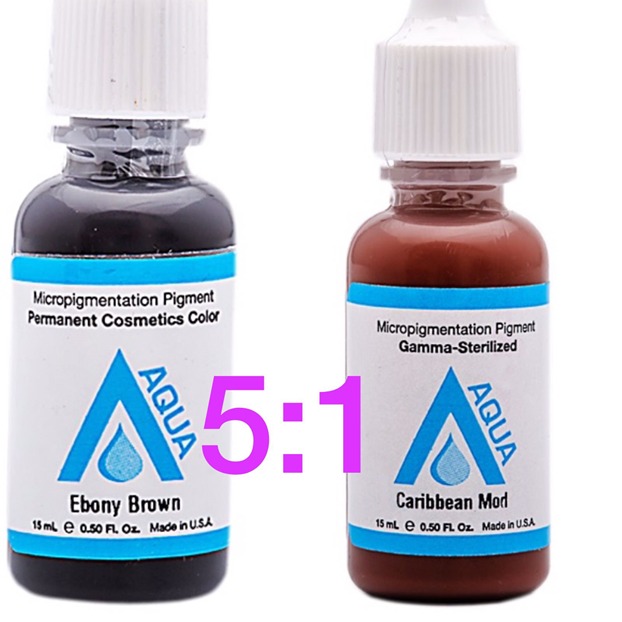
Pure ebony brown with NOT transparent technique.
Or mix with the warm Caribbean mod just a little bit.
__________
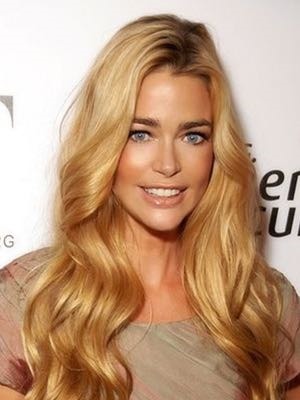
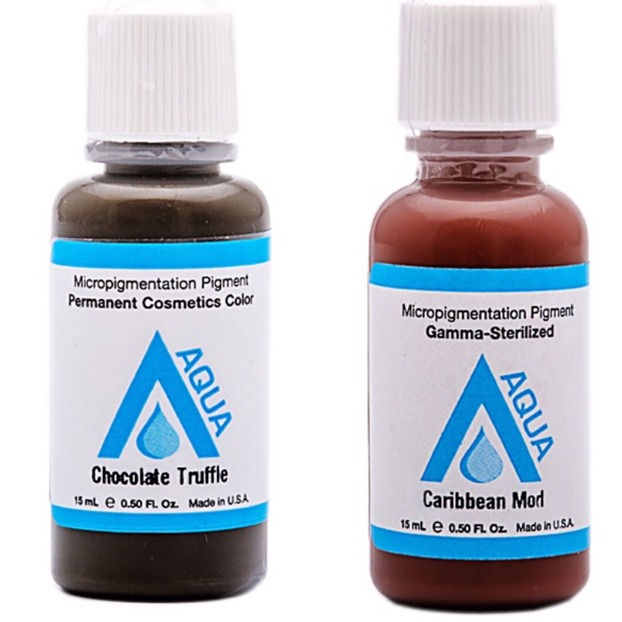
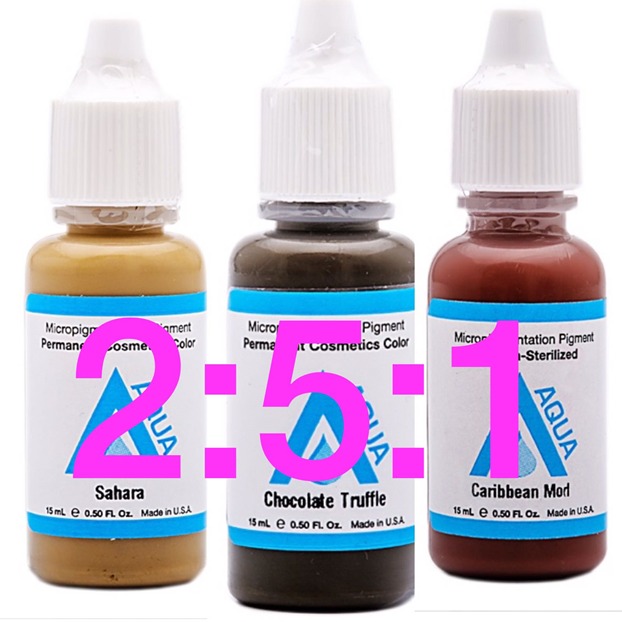
Warm blond
4:1 Chocolate Truffle + Caribbean Mod
For transparent technique
Or
2:5:1 Sahra+Chocolate Truffle + Caribbean Mod
For ombré technique, add Sahara for making chocolate truffle more light and just a little bit Caribbean mod for make color a little bit warmer
I hope now you understand how it works.
AQUA Eyebrow palette contains a lot of shades. But there is a favorite and those that are associated with certain risks.
I will share with you our experience.
For blondes:
- Pecan
- hazelnut
- cream coffee
This is the basic pigments I work with.
For chestnut:
- chocolate truffle
- dark toffee
This are two basic colors that I add pigments to yellow and red.
For Brunettes:
Two basic pigments:
- navajo- brown
- rich brown (licorice)
Both pigments require yellow corrector.
1. PECAN
Basis:
Neutral yellow/green
Not organic.
Description:
It’s light ash blond shade for Fitzpatrick I-III.
This color is suitable for blondes, light-brown or grey-haired who wish to obtain a light ash blonde shade.
This color is ideal for natural (not dyed blondes).
They can work in a pure form. Eventually goes into a soft grayish-beige hue.
2. HAZELNUT
Neutral yellow/green
It contains a small amount of red color.
Not organic.
Description:
It’s the well-balanced versatile medium brown color to the eyebrows, slightly warmer than the sandalwood, but without obvious warm tint.
For Fitzpatrick III-V.
It’s one of the most popular independent shades for eyebrows.
This is one of the favorite pigments of all times and peoples.
I add it almost in all of the mixes. This pigment is on a yellow basis. Accordingly, we add it to warm mixes were afraid to get grey or purple color over time.
It’s good as an independent pigment, as a base for golden warm blondes, but it is advisable to add one or two drops of pigments for fair-haired or brunettes not get too warm hue to the skin.
3. CREAM COFFEE:
Yellow/brown
Inorganic
Description:
It’s slightly tepid shade for blondes and light-brown.
Cream coffee recommendations fit to hazelnut one. It makes warm color and takes away negative shades of other pigments.
FOR BROWN
Two base colors
- dark toffee
- chocolate truffle
DARK TOFFEE:
Black/ Brown
It contains a small amount of yellow/orange, which makes it less cold than Navajo Brown.
Description:
It is a rich dark brown color, with a warm addition. Used alone on Ficpatrike III-VI (you can add UN gray on the cold type of skin).
If you want to light color, you need to add cappuccino, hazelnut или mochaccino.
On the output side is grey-brown. Always goes to grey over time. The corrector is grey-orange. Therefore, on 5-6 drops of dark coffee, I usually add 2-3kapli hazelnut (yellow) and 1-2kapli red pigment on the basis-Aqua is a cappuccino, mochaccino, cacao, auburn ...It gives excellent results after healing.
CHOCOLATE TRUFFLE:
Basis:
Yellow/green
Organic and inorganic
Description:
It’s a dark-blonde color.
It uses for getting dark-brown eyebrows.
If you compare the dark toffee and chocolate truffle you’ll see that truffle is warmer than dark toffee. It can be used in pure form on the warm skin. It looks great in brown hair with a red tone. It’s one of my favorites.
This dark toffee color is in a year and a half. The photo is before the upgrade. The color is great and I have not any pretensions to it. I added this color according to the scheme described above in the yellow and red pigments basis.
This is healed truffle and a couple of drops of hazelnut.
3. FOR BRUNETTS:
Two basic shades both on the purple base (not critical). As they have already red and blue, then add only the pigment on yellow liner-hazelnut.
NAVAJO BROWN:
Cool yellow/green
It contains a small amount of red color that makes this pigment less cool than espresso.
It’s inorganic.
It’s suitable for brunettes with cool hair and eyebrows tone, for Korean, when we don't need to get heat tone on the eyebrows.
RICH BROWN (LICORICE)
It’s more warm pigment for brunettes. It can be used in pure form on the warm skin. The pigment is very beautiful and my favorite.
Yellow/green inorganic.
Description:
This is the real bitter chocolate. It can give a gray tone of the skin on cool skin types.
If your client is warm brunette hair, then you can safely use this pigment. As a corrector, as I have already said, we take a yellow tone. If the skin is a little red (gray-green tint) you can add a drop of pigment on the red base- type mochaccino.
Rich brown, hazelnut and drop extra dark brown-is a fresh one.
Navajo Brown, hazelnut and caramel drop.
Rich brown and hazelnut.
Rich brown hazelnut and mochaccino.
Perhaps it is worth to say about two dangerous pigments.
-Espresso, on the blue base, always heals as cool graphite. It requires a red corrector. In Aqua this is “Caribbean mood”.
-Ebony Brown is on the violet base. This is a pretty dangerous pigment in awkward hands.
Ebony can be successfully practiced for blondes’ eyelids, as we do not want to receive the black arrow.
And by very simple language I want to explain how what’s going on with iron oxide in the skin and transformation of the color because of chemical reaction
To be very simple there are tree basic iron oxide colors: yellow, red and black
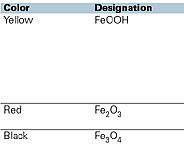
- And iron rusts at time as you know
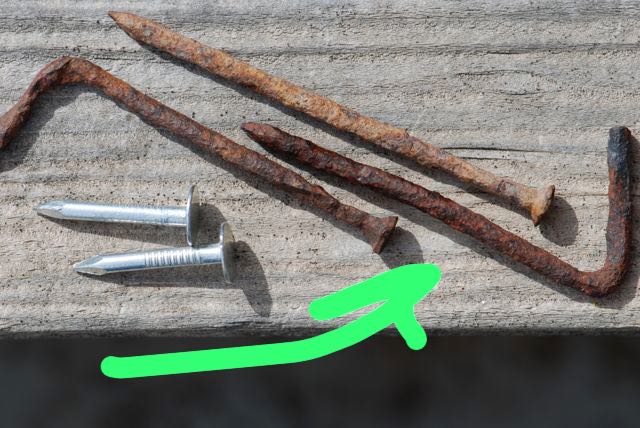
- It’s not terrible it’s just typical chemical reaction 👇🏻👇🏻👇🏻
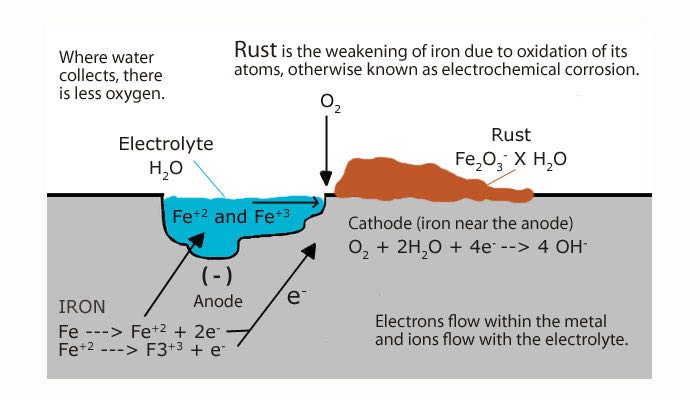
- Simple - Black turning to red
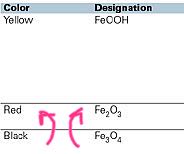
That’s why minerals pigments turn to red at a time if you take warm color (like milk chocolate) for the surface technique it will turn to red in a few months.
- So, what laser do with red brows?
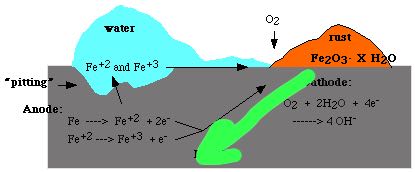
It turns this chemical reaction back, and turn red (Fe2O3 ) to black (Fe3O4).
And with different length of wave, it can turn black to red
- And now about red brows
- And now you know why after laser red brows turn to grey, and black brows turn to red, but also laser brake the molecular of pigments for smaller pieces and our body cells remove them by lymph.
- It works like this
It’s a very simple way to explain of cause it’s not so primitive but it’s enough for basic knowledge about it 👩🏻🎓👍🏼
The most important to understand that this method works because iron oxide is not stable molecular
With organics pigments, it’s not so simple
Organic molecular has a more stable structure and laser can’t “see” change it and break it usually
That’s why we need chemical removal system for remove it (and usually in the base of this is Acid or Saline) it’s something aggressive for start chemical reaction and it always gives chemical burn for skin
So I think twice before I take organic color because the result is more stable it’s good of cause but something we don’t need something forever
And let me share by my opinion about “perfect or true” black color in permanent make up for eyeliners
Eyeliners turn to blue because:
- there is no pure black color in the Mother Nature, it’s deep blue or deep green and after the healing, under the skin, we just see the base of color, if it’s blue it’s blue
- because the colour goes to deep, when pigments to deep, lay off the skin transformers a ray of light stronger, because the skin is not trash like glass and for our eyes color look more bluish
- because for skin without melanin is more visible, melanin layer locates more surface then we implant the pigment that’s why eyeliners look much better for rich of melanin skin types, blue effect hides under the melanin lay
- because the most black pigments based on “carbon black” and this is very stable molecules under the skin look like blue and red and yellow parts of pigment disappears first, because they are not so stable, that’s why ALL eyeliners turn to blue at the time, we can’t change it
Not only your eyeliners turn to blue, but it also happens with everybody, you are not alone, it happens because of black pigment work like this and all we can do to prevent it:
- choose the right candidate for this type of procedure (girl with rich of melanin skin, thick lashes etc)
- choose the right technique, combine with shadow on top for example
- choose safety design, maybe thinner liner and not thick under the lashes
- and mix the black color with orange or red, it’s temporary but it’s better
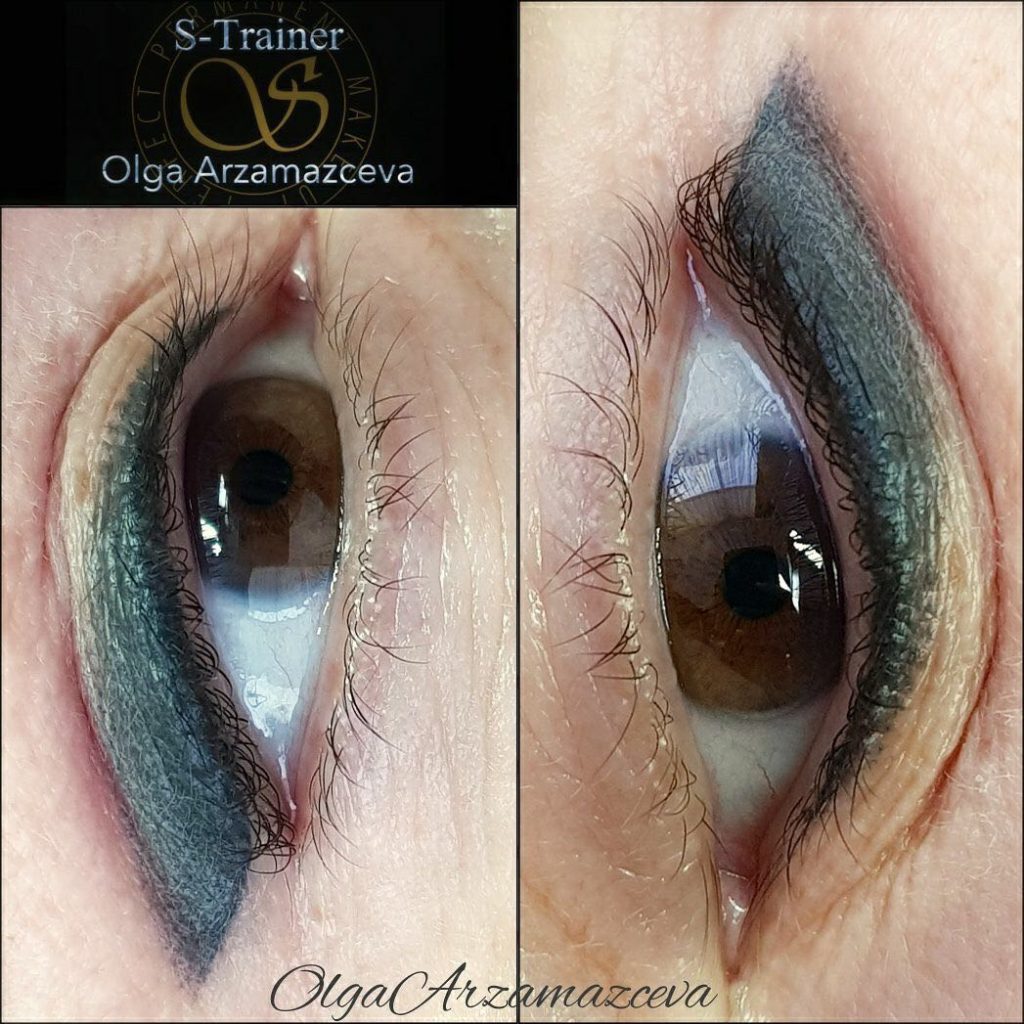
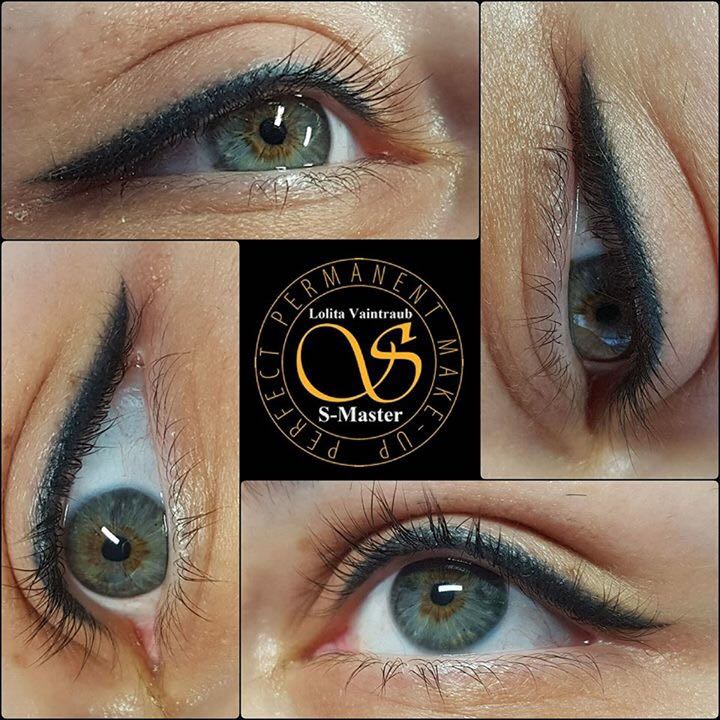
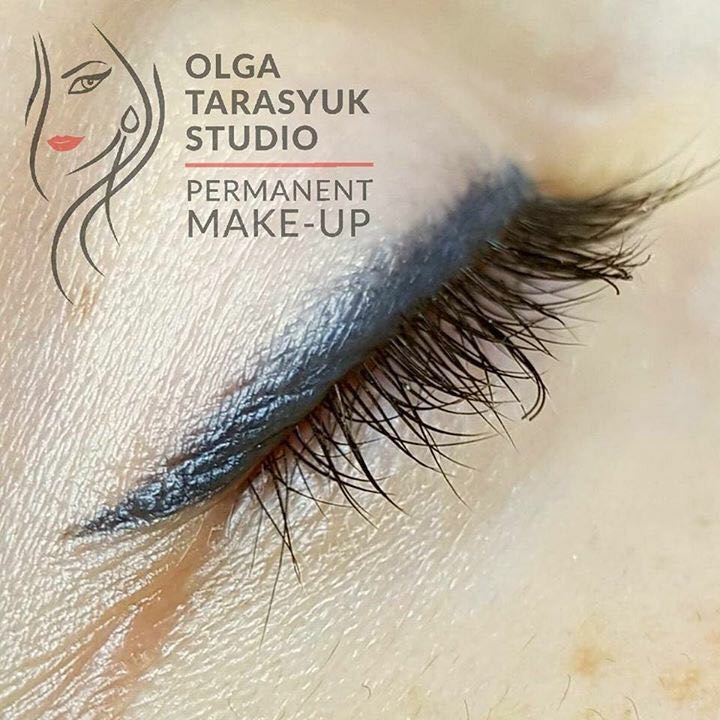

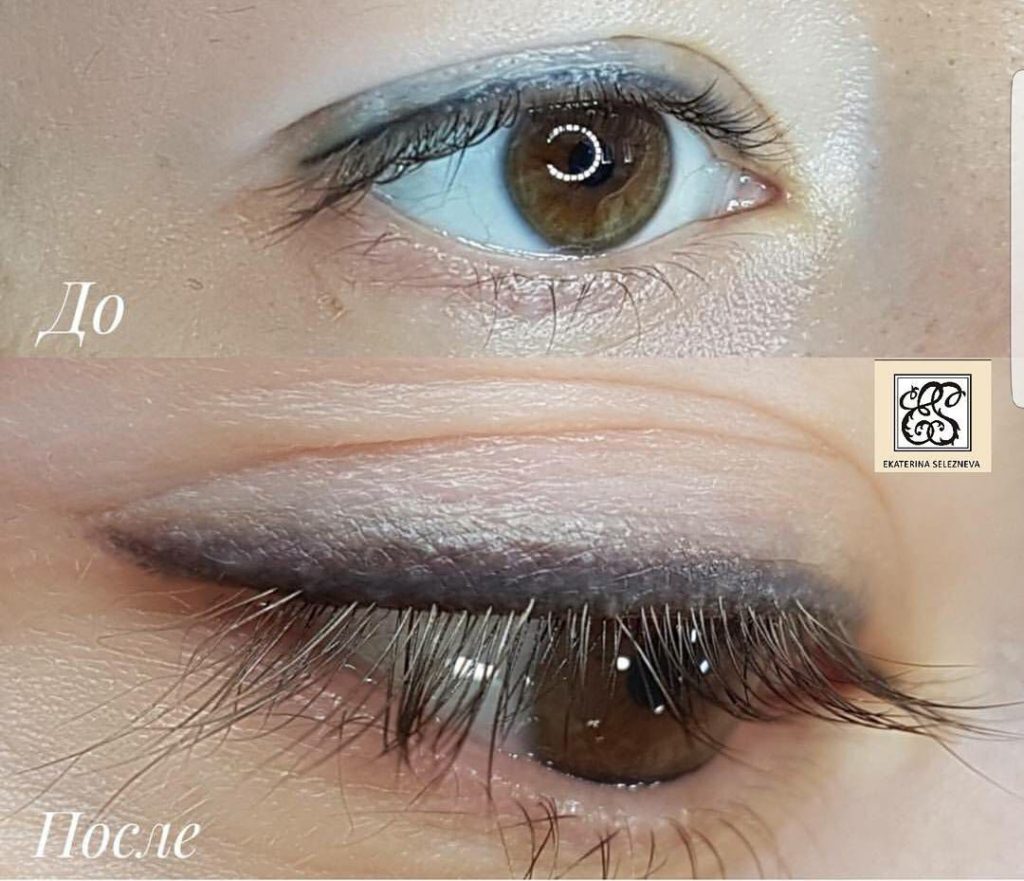
This is examples of work very brilliant masters
And if you will look you will see that after heal all of them looks a little bit grayish, bluish, brownish 👍🏼 it’s just because healed results is like this pmu is under the skin
And don’t forget about good light, a good candidate for this technique and photoshop
When you see good pictures, don’t think that it will always work
There is no way to make a pure black liner for white not transparent (rich of collagen ) skin for a client with light blue eyes and guarantee that this eyeliner will not turn to blue after 4-6 month
I want you to understand what is possible and what’s really impossible to do because of many reasons and what is reasonable to do and when for keep your clients safe.
